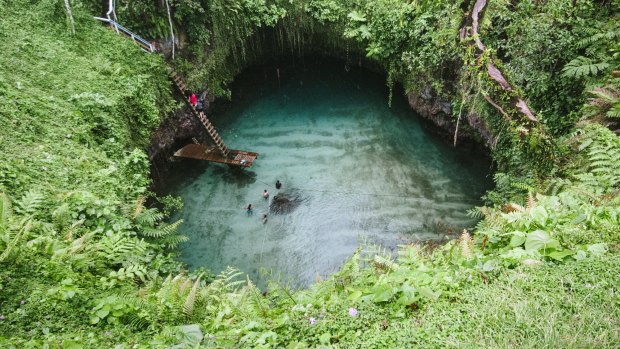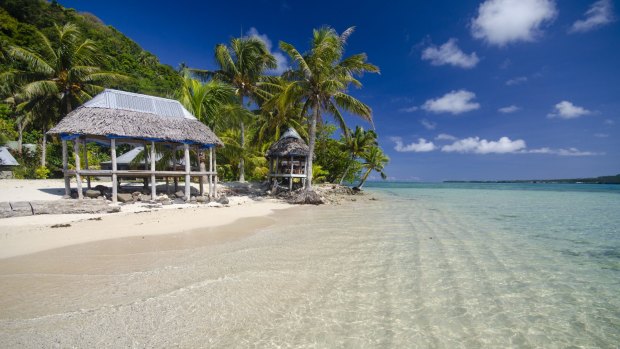This was published 5 years ago
Why Samoa may be the best of all the Pacific islands to escape to

Taking a dip in the magnificent To Sua ocean trench.Credit: Stocksy
Samoan life feels so unaffected by the modern world that it's hard to believe they had to worry about the same global virus that's kept us all locked in our homes. Especially since no one had tested positive in the country when the borders were closed to outsiders in mid-March. Perhaps the government figured that the virus might spread like wildfire through a land where locals live in extended families in small communities, as they've done for two millennia.
Nowhere is more traditionally Polynesian. Where the French exercised considerable influence in Tahiti, and New Zealand did the same in the Cook Islands (where I grew up), Samoans still live almost exactly the way they always have. Their houses (fales) still don't have walls.
Tribal chiefs rule the country of two main islands, Savai'i and Upolu, and four smaller islands, while locals live simple, sleepy existences in tiny villages that shut down entirely on Sundays, when Samoa goes to church.
Don't expect to do much, though you may be invited to take part in feasts which can last entire afternoons (eating is a national pastime in Samoa). While Samoa is a great destination for lovers of sleep (siestas are so much a way of life that they're built into the constitution), there's actually a fair bit to do.
Samoa may not have heaving nightlife, but its resort bars epitomise the region's laid-back lifestyle. They're built on beaches beside the lagoon, live music is often playing, and while they don't stay open late you can finish off your drink on the sand watching shooting stars zip across the sky.
There are few of the high-density three- and-four-star tourist resorts you find across the Pacific and south-east Asia. Instead, smaller resorts and guesthouses are built in rarely visited bays – particularly on the larger but less populated Savai'i, where few tourists go, even though it's easily accessed via an hour-long ferry ride from Upola.

Samoans still live almost exactly the way they always have. Their houses (fales) still don't have walls.Credit: iStock
Enjoying the sun is only the start in this tropical climate. Locals man natural landmarks like subterranean caves or volcanic ocean trenches where you can swim for a small entrance fee.
Samoa also has some of the South Pacific's best waterfalls – from 80m-high thundering falls to family-friendly swimming cascades. I like to waterfall-crawl on Upolu's south coast, taking in Papapapaitai, Togitogipa, Sopoaga and Fuipisia Falls.
Samoa also claims to be where surfing actually began, not Hawaii as most people believe. World-class waves break across the coastlines of Samoa's two main islands year-round, but barely any locals surf. There are surf camps scattered across Samoa – each accessing its own secret reef breaks, most only accessible by boat (be warned: they're not for beginners).
The diving in Samoa is also considered some of the best in the Pacific, with visibility of up to 85 metres and water temperatures that range between the low 20s and 30 degrees, with over 900 fish species and 200 varieties of coral.
With so much going for it, I can't understand why I've never seen more than a handful of Australian tourists in my 15 years of travelling to these islands. Samoa's lost-in-paradise vibe, combined with its myriad attractions – both natural and man-made (the restaurants here provide at least two weeks' worth of noteworthy options) – make for a perfectly relaxing getaway in a beautiful country.
Not that I'm complaining. In a world overrun by tourism there was something special about finding a nook no one knows about, and all just a six-hour flight from home.
What to read: Robert Louis Stevenson in Samoa by Joseph Farrell. The famous writer is buried on Samoa, where he lived his last four years.
Sign up for the Traveller Deals newsletter
Get exclusive travel deals delivered straight to your inbox. Sign up now.